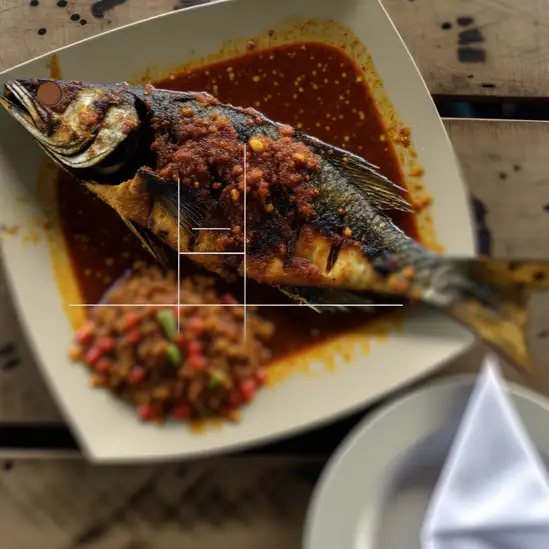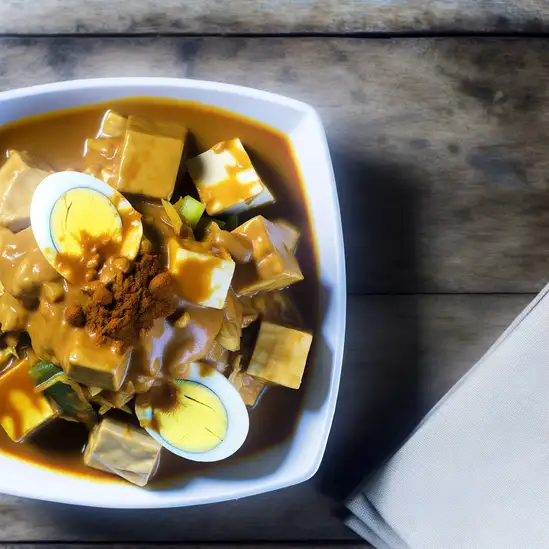


If you’re dreaming of a place where raw nature takes center stage and every moment feels like an adventure,Komodo Island in Indonesia is where you want to be. The vibe here is wild and untamed,yet strangely peaceful—like stepping into a living,breathing storybook. Imagine waking up to the salty breeze mingling with the earthy scent of tropical forests,while the distant calls of exotic birds echo through the air. The island’s rugged landscapes,with pink-hued beaches and crystal-clear turquoise waters,invite you to explore both above and below the surface. What really sets Komodo apart is its legendary inhabitants—the Komodo dragons. Watching these ancient creatures lumber through the underbrush is like glimpsing a prehistoric world. But it’s not just about the dragons; the island pulses with vibrant life. Snorkeling here feels like swimming inside a kaleidoscope,with colorful coral reefs bustling with fish,graceful manta rays gliding by,and the occasional curious turtle popping up to say hello. Beyond the natural wonders,the local culture adds a warm,human touch. The small villages are dotted with friendly faces,where you can savor fresh seafood grilled over open flames,infused with fragrant spices and a hint of the sea. Evenings bring a gentle calm,with skies painted in fiery oranges and purples,perfect for reflecting on the day’s adventures. Komodo Island isn’t just a destination—it’s a place that stirs your soul and leaves you with stories you’ll want to tell over and over.
The information on this page is currently being reviewed by Tripkliq and should be used as a guide only
Eng word: Hello
Eng pronunciation: HAH-loh
Local language: Halo
Eng word: Goodbye
Eng pronunciation: suh-LAH-maht TING-gahl
Local language: Selamat tinggal
Eng word: Thank you
Eng pronunciation: teh-REE-mah KAH-see
Local language: Terima kasih
Eng word: How much
Eng pronunciation: buh-RAH-pah
Local language: Berapa
Eng word: Toilet
Eng pronunciation: TOY-let
Local language: Toilet
Eng word: Help me
Eng pronunciation: TOH-long SAH-yah
Local language: Tolong saya
Eng word: Yes
Eng pronunciation: YAH
Local language: Ya
Eng word: No
Eng pronunciation: TEE-dahk
Local language: Tidak
Eng word: Excuse me
Eng pronunciation: puhr-MEE-see
Local language: Permisi
Komodo Island is world-renowned for being the natural habitat of the Komodo dragon, the largest living species of lizard. The island gained international attention in 1910 when Dutch colonial administrators first documented the existence of these incredible creatures.
In 1980, Komodo National Park was established to protect the unique biodiversity of the island, particularly the Komodo dragon. The park spans several islands and marine areas, making it a haven for both terrestrial and marine wildlife.
In 1991, Komodo National Park was designated as a UNESCO World Heritage Site. This recognition highlights the global importance of the park's unique ecosystems and its efforts in conservation.
Archaeological evidence suggests that Komodo Island has been inhabited by humans for thousands of years. The indigenous people have coexisted with the Komodo dragons and have developed unique cultural practices and traditions.
Komodo Island is not just about dragons; it is also famous for its rich marine biodiversity. The surrounding waters are home to over 1,000 species of fish,260 species of reef-building coral, and 70 species of sponges.
One of the island's most unique attractions is Pink Beach, known for its stunning pink-hued sand. The color comes from the mixture of white sand and red coral fragments, making it a must-visit spot for tourists.
The island is home to several traditional villages where visitors can experience the local culture and way of life. These villages offer a glimpse into the island's rich cultural heritage and traditional crafts.
Komodo Island is a top destination for diving and snorkeling enthusiasts. The crystal-clear waters and vibrant coral reefs provide an unforgettable underwater experience, attracting divers from around the world.
Rinca Island, part of Komodo National Park, is another significant location where Komodo dragons can be found. It offers a less crowded alternative to Komodo Island and provides excellent opportunities for wildlife viewing.
In Komodo Island, the most common Power Adaptor is Type C, Type F.



Indonesian fried rice, often mixed with vegetables, meat, and spices, making it a popular comfort food among locals and visitors alike.

Grilled fish marinated with a blend of spices, often served with sambal and rice, showcasing the fresh seafood of the region.

A salad of boiled vegetables, tofu, and hard-boiled eggs, topped with a creamy peanut sauce, offering a refreshing and healthy option.

Smashed fried chicken served with sambal, rice, and fresh vegetables, known for its bold flavors and satisfying texture.

Skewered and grilled meat, typically chicken or beef, served with a rich peanut sauce, reflecting the local flavors and cooking techniques.
Bali feels like stepping into a vibrant dream where every corner pulses with life and warmth. From the moment you arrive,there’s this unmistakable energy—part spiritual,part playful—that wraps around you like a soft,tropical breeze. Imagine waking up to the gentle rustle of palm leaves and the distant sound of waves crashing against volcanic black sand beaches. The air carries a mix of frangipani blossoms and salty sea spray,instantly grounding you in the island’s natural beauty.
What really makes Bali special is its rich culture woven into everyday life. You’ll see locals in colorful sarongs offering flowers at temple steps,hear the rhythmic beat of gamelan music drifting through the air,and catch glimpses of intricate wood carvings and vibrant paintings in small artisan shops. The island’s spirituality isn’t just something you observe—it’s something you feel,a quiet presence that invites you to slow down and connect.
And then there’s the food—oh,the food! Freshly grilled satay,fragrant nasi campur bursting with spices,and tropical fruits so sweet they almost taste like candy. Whether you’re dining in a bustling market or a cliffside café overlooking the ocean,every bite feels like a celebration of Bali’s rich flavors and traditions. Honestly,Bali isn’t just a place you visit; it’s a place that stays with you,long after you’ve left.
If you find yourself wandering through Kota Administrasi Jakarta Pusat,you’ll immediately notice the pulse of a city that’s both historic and buzzing with modern energy. It’s a place where colonial-era buildings stand shoulder to shoulder with sleek skyscrapers,creating a fascinating blend of old and new. Walking down the streets,you can almost hear the echoes of history mingling with the chatter of office workers and street vendors. The air carries a mix of aromas—from the rich,spicy scent of street food stalls grilling satay to the faint,comforting smell of freshly brewed kopi from tiny warungs tucked in corners.
What really makes Jakarta Pusat special is its vibrant character. It’s the heart of the city’s administrative and cultural life,so you’ll find a lively mix of people—government officials,artists,students,and families—all weaving their stories into the urban fabric. The bustling markets,like Pasar Baru,invite you to haggle over colorful textiles and local snacks,while nearby museums and galleries offer a quiet retreat into Indonesia’s rich heritage.
There’s a rhythm here that’s both fast-paced and inviting. Whether you’re sipping a sweet es cendol under the shade of a tree in Merdeka Square or catching the golden light reflecting off the National Monument at dusk,Jakarta Pusat feels alive in a way that’s deeply human and endlessly fascinating. It’s a city that invites you to slow down,look around,and soak in the layers of life unfolding all at once.
Surabaya pulses with an energy that’s both vibrant and welcoming,a city where history and modern life dance side by side. As you wander through its bustling streets,you’ll catch the scent of sizzling satay mingling with the salty breeze from the nearby harbor. The city hums with the chatter of locals bargaining in lively markets,the clatter of motorbikes weaving through traffic,and the distant call of street vendors selling fresh tropical fruits. It’s a place where every corner tells a story—from colonial-era buildings standing proudly alongside sleek skyscrapers to colorful murals that splash life onto old walls.
What really makes Surabaya special is its character:tough yet warm,a city that’s seen its share of history but never lost its heart. The people here are fiercely proud and incredibly friendly,always ready to share a smile or a recommendation for the best local warung. Dive into the food scene and you’ll find yourself savoring rich,spicy flavors—like the famous rawon,a dark beef soup that’s both comforting and bold,or the sweet,sticky lontong balap that fills the air with fragrant spices.
Evenings in Surabaya have their own magic. The city lights flicker on,and the streets fill with the sounds of gamelan music drifting from cultural performances or the laughter spilling out of cozy cafes. Whether you’re exploring the historic old town or simply sipping kopi on a street corner,Surabaya invites you to slow down,soak in its layers,and feel the heartbeat of a city that’s alive in every sense.
Manado has this incredible energy that feels both vibrant and laid-back at the same time. When you stroll through its streets,you’re greeted by the lively chatter of locals,the scent of sizzling spices from street food stalls,and the occasional splash of the nearby sea breeze. It’s a place where the warmth of the people matches the tropical sun overhead,making you feel instantly welcome. The city’s colorful markets burst with fresh fruits,exotic flowers,and the catch of the day,inviting you to taste the rich flavors of Minahasan cuisine—think spicy sambal,fresh seafood grilled to perfection,and sweet tropical fruits that melt in your mouth.
What really sets Manado apart is its unique blend of cultures and traditions. You’ll notice the mix of indigenous influences alongside Chinese and Dutch heritage,all woven into the city’s architecture,festivals,and daily life. The local language dances in the air,and the smiles you get from the locals feel genuine,like they’re sharing a piece of their home with you. Beyond the city,the surrounding landscapes are jaw-dropping—lush hills,volcanic peaks,and some of the world’s best diving spots just a short ride away.
If you’re into nature and culture,Manado offers a rhythm that’s both exciting and soothing. Whether you’re wandering through the bustling Pasar Bersehati market,savoring a cup of local coffee,or watching the sunset paint the sky over Bunaken Island,you’ll find yourself drawn into a story that’s uniquely Manado’s. It’s a place that stays with you long after you leave.
If you ever find yourself craving a place where the ocean breeze carries the scent of sizzling street food and the hum of lively markets fills the air,Makassar should be at the top of your list. This city pulses with a laid-back energy that feels both vibrant and welcoming,like a friend inviting you to slow down and savor the moment. Walking along the waterfront,you’ll catch glimpses of traditional wooden phinisi boats bobbing gently,their sails catching the golden light of sunset,while fishermen call out to one another in a melodic rhythm that feels timeless.
Makassar’s streets are a feast for the senses. The aroma of grilled seafood—freshly caught and seasoned with local spices—wafts from warungs lining the alleys,tempting you to try coto Makassar,a rich,aromatic beef soup that locals swear by. The city’s mix of Bugis and Makassarese cultures shines through in its colorful markets,where vibrant textiles,handcrafted jewelry,and lively banter create a tapestry of daily life that’s both authentic and inviting.
What really makes Makassar stand out is its blend of old and new. You can explore centuries-old forts and mosques,then hop over to a bustling café where young creatives gather,blending tradition with modern flair. It’s a place where every corner tells a story,and every meal feels like a celebration. Trust me,Makassar isn’t just a stopover—it’s a place that stays with you long after you’ve left.
If you ever find yourself wandering through Yogyakarta,you’ll immediately notice a rhythm that feels both lively and laid-back,like the city is humming a gentle,inviting tune. It’s a place where ancient traditions and youthful energy collide in the most beautiful way. As you stroll down Malioboro Street,the air is thick with the scent of sizzling satay and sweet jasmine from roadside stalls,while the chatter of locals bargaining and the distant beat of gamelan music create a vibrant soundtrack. The city’s heart beats in its art and culture—every corner seems to hold a story,from the intricate batik workshops to the majestic temples of Borobudur and Prambanan just a short ride away.
Yogyakarta’s charm lies in its warmth and authenticity. The people here are incredibly welcoming,often eager to share their crafts,stories,or a cup of strong Javanese coffee. You can feel the city’s deep respect for its heritage,yet it’s also a hub for creative souls,with street art splashed across walls and indie cafes buzzing with young artists and thinkers. The sunsets here are something else—casting a golden glow over the terracotta rooftops and ancient palaces,inviting you to pause and soak it all in.
Whether you’re wandering through the Sultan’s Palace,tasting gudeg (a sweet jackfruit stew) at a local warung,or simply watching the world go by from a cozy café,Yogyakarta wraps you in a sense of belonging. It’s a city that doesn’t just ask you to visit but to stay a little longer,to explore deeper,and to fall in love with its soul.
Scammers claim to be park officials and demand fake entrance fees or additional charges for access to Komodo National Park.
Tourists are approached by individuals claiming to collect donations for wildlife conservation, but the money goes into their pockets instead.
Unlicensed individuals posing as official tour guides offer their services at inflated prices, often providing subpar experiences or misleading information.
Scammers promise exclusive encounters with Komodo dragons or other wildlife for a fee, but the experience is often staged or nonexistent.
Tourists renting motorbikes may be accused of causing pre-existing damage to the vehicle, leading to demands for compensation.
Some operators charge exorbitant prices for boat tours to Komodo National Park, especially if tourists don't research standard rates beforehand.
Vendors in tourist-heavy areas may inflate prices of souvenirs, especially if they sense tourists are unfamiliar with local pricing.
Some locals demand unexpected fees for taking photos of Komodo dragons or other attractions, even in public areas.
The use, possession, and trafficking of illegal drugs are strictly prohibited in Indonesia, including Komodo Island. Indonesia has very stringent drug laws, and violations can result in severe penalties, including long prison sentences and even the death penalty. Tourists should avoid any involvement with illegal drugs to ensure their safety and compliance with local laws.
Smoking is generally allowed in designated areas on Komodo Island, Indonesia. However, tourists should be mindful of local regulations and restrictions, especially in protected areas such as the Komodo National Park. Smoking is strictly prohibited in areas where it can pose a fire hazard or disturb wildlife. Always look for and adhere to 'No Smoking' signs.
Vaping follows similar regulations to smoking on Komodo Island. It is allowed in designated areas but prohibited in protected zones and places where it can harm the environment or wildlife. Tourists should be cautious and respectful of local rules and signage regarding vaping.
What are other people saying about Komodo Island?
Recent Social posts about Komodo Island
There is nothing to show you for now.